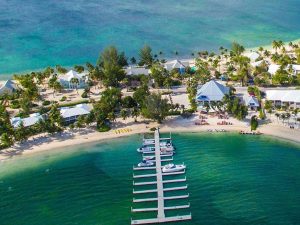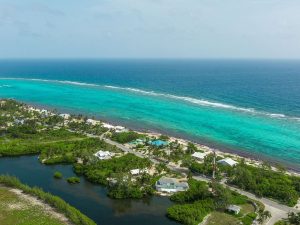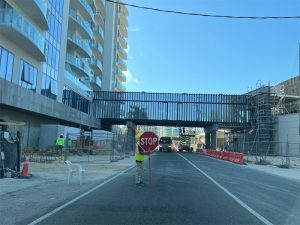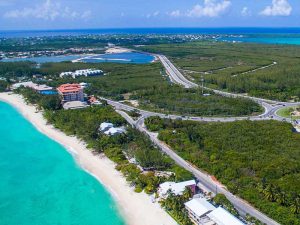Home » Things to do » Cayman Brac
Cayman Brac
Cayman Brac is the larger of the two sister islands. It offers a perfect weekend getaway for people working on Grand Cayman or a destination for holidaymakers in its own right. Measuring a tiny 12 miles in length by almost 2 miles at its widest, Cayman Brac is the second largest island in this small nation.
“The Brac” as it is affectionately known, is a charming island located just 5 miles from Little Cayman. The inhabitants of Cayman Brac, ‘Brackers’ are renowned for their friendliness and hospitality and no wonder, as life here is certainly relaxed and the perfect place to recharge the batteries. Fly in or out during the daytime and take full advantage of the magnificent views of the bluff rising above the azure and turquoise waters of the Caribbean Sea.
The island was given the Gaelic name for ‘bluff’, the dominating feature of the island, by early settlers. Rising majestically from the seas to some 144ft at its highest point the bluff appears an impenetrable and inhospitable force to be reckoned with. The bluff was formed 25-30 million years ago and is predominately a treacherously sharp limestone karst, known locally as iron shore. The bluff is highest at the east end of the island where there is nothing between it and the sea below; it then tapers out to the west where there is a mixture of iron shore and sandy beaches.
Eco-Tourism
The bluff itself provides an ideal home for the breeding colony of brown boobies – large pelagic birds – and the superb frigate birds that torment the boobies and steal their hard-won fish. Close to 200 species of birds have been identified on the island including the endemic loggerhead kingbird, red-legged thrush and vitelline warbler – not forgetting the endangered Cayman Brac parrot. In response to the very real need to protect these birds, the government established a sanctuary stretching across the island to maintain the habitat and breeding grounds for perpetuity. Between the harsh interior and the wetland sanctuaries this island calls to bird watchers from across the globe.
Can’t find the information you are looking for, use the
Cayman Islands GPT
Related Topics
There is significantly more vegetation on Cayman Brac than in Grand Cayman, and the roadsides and interior are populated with red birch trees and the superbly named ‘dildo cacti’. Visit during November to January and be rewarded with roads lined with a yellow flowering bush known locally as ‘Christmas Flowers’.
There are a number of hikes across, over and through the island. The National Trust maintains the hiking trails and there are hikes suitable for all fitness and endurance levels. Remember to take plenty of water with you, sturdy walking shoes (the rocks are jagged and sharp), a hat, and sunscreen. It is always wise to tell someone where you are planning to hike, particularly if you are hiking alone. If you are planning to hike anywhere along the Bluff, keep to the paths and do not be tempted to go too close to the edge; it can be perilous and unstable.
Diving and Snorkeling
One of the main reasons people visit the Cayman Islands is to snorkel and scuba dive. The combination of a responsibly minded marine-conscious government and a history of professional water sports companies have ensured that the waters of the Cayman Islands remain in peak condition. The conditions are ideal; year-round water temperatures waiver around the 80-Fahrenheit mark, the visibility can be indescribably good and the dive and snorkel sites are pretty much pristine. There is the opportunity for boat and shore dives and snorkeling trips here, as well as deep-sea and shore fishing. Everything can be easily arranged on the island, from hiring the gear you may need to booking your water sports adventure. The Cayman Islands are most famous for their waters and exploring them is most certainly a rewarding experience.
When booking your trip bear in mind that there is no public transport on Cayman Brac. The ‘bus-stop’ signs are for school buses only. The transport options are to borrow a ‘bone-shaker’ bicycle from the hotel, pay to hire a bike with brakes and a helmet, take a cab or hire a car. Unless you are super-fit and planning to cycle the island or have the money to take a cab everywhere, hire a car and discover for yourself just some of the treats this small island holds in store.
For some reason, if the idea of hiking, bird watching, or taking to the water is not for you then find yourself a good book and a hammock under a swaying coconut palm and enjoy true tranquility.






